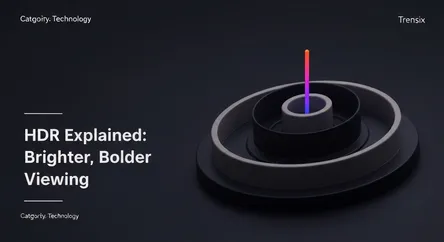Technology
HDR Explained: Brighter, Bolder Viewing

Discover HDR (High Dynamic Range), the technology that revolutionizes your viewing experience with deeper blacks, brighter whites, and a wider color gamut.
What is it?
High Dynamic Range (HDR) is a display technology that significantly expands the range of both contrast and color. Unlike Standard Dynamic Range (SDR), which has limitations in representing the full spectrum of light and color our eyes can see, HDR aims to create a more realistic and lifelike image. It achieves this by increasing the luminance range, making bright parts of the image brighter and dark parts darker, all while retaining intricate detail. It also supports a wider color gamut, allowing for more vibrant and nuanced colors. Popular formats include the open-standard HDR10, the dynamic HDR10+, and Dolby Vision.
Why is it trending?
HDR is trending because it has become a standard feature in modern 4K and 8K TVs, gaming consoles, smartphones, and computer monitors. The proliferation of HDR-capable devices has been matched by a surge in HDR content from streaming giants like Netflix, Disney+, and Amazon Prime Video, as well as on Blu-ray discs and in the latest video games. This availability makes the dramatic visual upgrade from SDR more accessible than ever, turning it from a niche feature into a mainstream expectation for a premium viewing experience.
How does it affect people?
For the average person, HDR transforms the entertainment experience. It creates a more immersive and engaging picture, making movies feel more cinematic and games more realistic. Details that were once lost in shadows or blown out in bright highlights are now clearly visible, adding depth and realism to every scene. Whether you're watching a sunset in a nature documentary or navigating a dark level in a video game, HDR allows you to see the content closer to how the creator intended and how our eyes perceive the real world, making the on-screen action more vibrant and captivating.